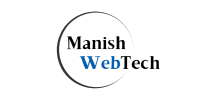Introduction
Here is some introduction on Full HTML Course. In today’s digital era, having a firm grasp of HTML (Hypertext Markup Language) is indispensable for anyone venturing into web development. Whether you’re a beginner eager to start your journey or an experienced developer seeking to deepen your knowledge, our Full HTML Course Breakdown promises to be your guide. Over the course of this in-depth program, you’ll delve into eight fundamental HTML concepts, equipping yourself with the skills necessary to craft web pages that are not only functional but also aesthetically pleasing.
1. Understanding the Structure of HTML
Full HTML Course Tip #1: To truly master web development, it is imperative to grasp the foundational structure of HTML. The course commences with an exploration of HTML’s core elements, encompassing tags, elements, attributes, and how they collaboratively lay the groundwork for web content.
Dive Deeper: HTML Basics – The Building Blocks of the Web
Our comprehensive guide to HTML basics delves deep into the elements that constitute the web’s building blocks. Learn how to structure content and construct web pages that convey information effectively. Read more
2. Creating Headings and Paragraphs
Full HTML Course Tip #2: Headings and paragraphs serve as the fundamental elements for content organization and presentation. As you progress through the course, you’ll uncover the art of employing heading tags (from h1 to h6) and paragraph tags (p) adeptly.
Pro Tips: Crafting Engaging Headings and Text
Elevate your content creation skills with expert guidance on crafting compelling headings and text. Learn the nuances that captivate your audience, enhance readability, and foster user engagement. Read more
3. Working with Lists
Full HTML Course Tip #3: Lists are indispensable for presenting information systematically. The Full HTML Course navigates through ordered lists (ol), unordered lists (ul), and definition lists (dl) to impart the expertise needed for effective content organization.
List Mastery: Creating Ordered and Unordered Lists
Master the intricate art of fashioning visually appealing lists. This skillset ensures that your content becomes more digestible, thus enriching the user’s experience. Delve into the realm of ordered and unordered lists. Read more
4. Adding Links and Anchors
Full HTML Course Tip #4: Hyperlinks act as the connective tissue between web pages, while anchors facilitate in-page navigation. Throughout this course, you will develop the competence to create links (a) and anchors (a name) to enhance the overall user experience.
Linking Proficiency: Crafting Interactive Web Pages
Unleash the potential of hyperlinks and anchors to build dynamic and user-friendly web pages. Explore the intricacies of linking content seamlessly within your web structure. Read more
5. Inserting Images and Multimedia
Full HTML Course Tip #5: Visual content forms an integral part of web design. In the course modules, you will uncover the art of embedding images (img) and multimedia elements (audio and video) into your web pages.
Visual Storytelling: Enhancing Web Pages with Media
Harness the power of images and multimedia to narrate compelling stories on your web pages. These techniques allow you to seamlessly integrate various media elements for an enriched user experience. Read more
6. Form Elements and User Input
Full HTML Course Tip #6: Forms are quintessential for user interaction. Our course material meticulously covers form elements (input, textarea, select) and strategies for effective user data collection.
User Engagement: Building Interactive Forms
Learn to create interactive forms that facilitate the collection of valuable user data. Dive into form elements and discover best practices for user-friendly input fields. Read more
7. Structuring Tables and Data
Full HTML Course Tip #7: Tables provide the structure needed for data organization. As part of this course, you’ll delve into HTML tables (table, tr, td) to understand how to structure and style tabular data effectively.
Data Mastery: Creating Informative Tables
Master the art of crafting well-organized and visually appealing tables. These skills enable you to present complex data in a user-friendly manner, enhancing the overall user experience. Read more
8. HTML Semantic Elements
Full HTML Course Tip #8: HTML semantic elements endow your content with meaning. Dive into HTML5 semantic tags (header, footer, article, section) to create structured, accessible web pages.
Semantic Web: Crafting Meaningful Content
Elevate your web development skills by comprehending the significance of semantic HTML elements. Learn to craft content that is not only visually captivating but also semantically rich, enhancing both user experience and accessibility. Read more
Full HTML Course Breakdown: 8 Key Concepts You’ll Master
As you navigate through this comprehensive HTML course breakdown, you’ll find yourself equipped with the knowledge and skills to confidently tackle web development projects. The Full HTML Course isn’t merely a tutorial; it’s a transformative journey that unlocks your potential in web development.
FAQs
How long does it take to master HTML?
The duration required to master HTML varies depending on your starting point and dedication. With consistent practice, proficiency can be achieved in a few months.
Do I need coding experience to enroll in the Full HTML Course?
No prior coding experience is necessary to embark on this journey. The Full HTML Course is tailored to cater to learners at all levels, making it an excellent starting point for aspiring web developers.
What practical applications does HTML have in the real world?
HTML serves as the foundational language for creating web pages, websites, email templates, and various other forms of digital content. It remains a cornerstone of modern web development.
Are there advanced HTML concepts to explore after completing the Full HTML Course?
Certainly, once you’ve mastered the fundamentals, you can delve into advanced topics such as HTML5 APIs, responsive web design, and web accessibility, broadening your web development expertise.
Where can I practice my HTML skills after completing the course?
Numerous online platforms offer coding challenges, projects, and collaborative communities where you can apply and reinforce your HTML skills.
Is HTML still relevant in modern web development?
Absolutely. HTML retains its pivotal role in web development, serving as the foundation upon which websites and web applications are constructed.




